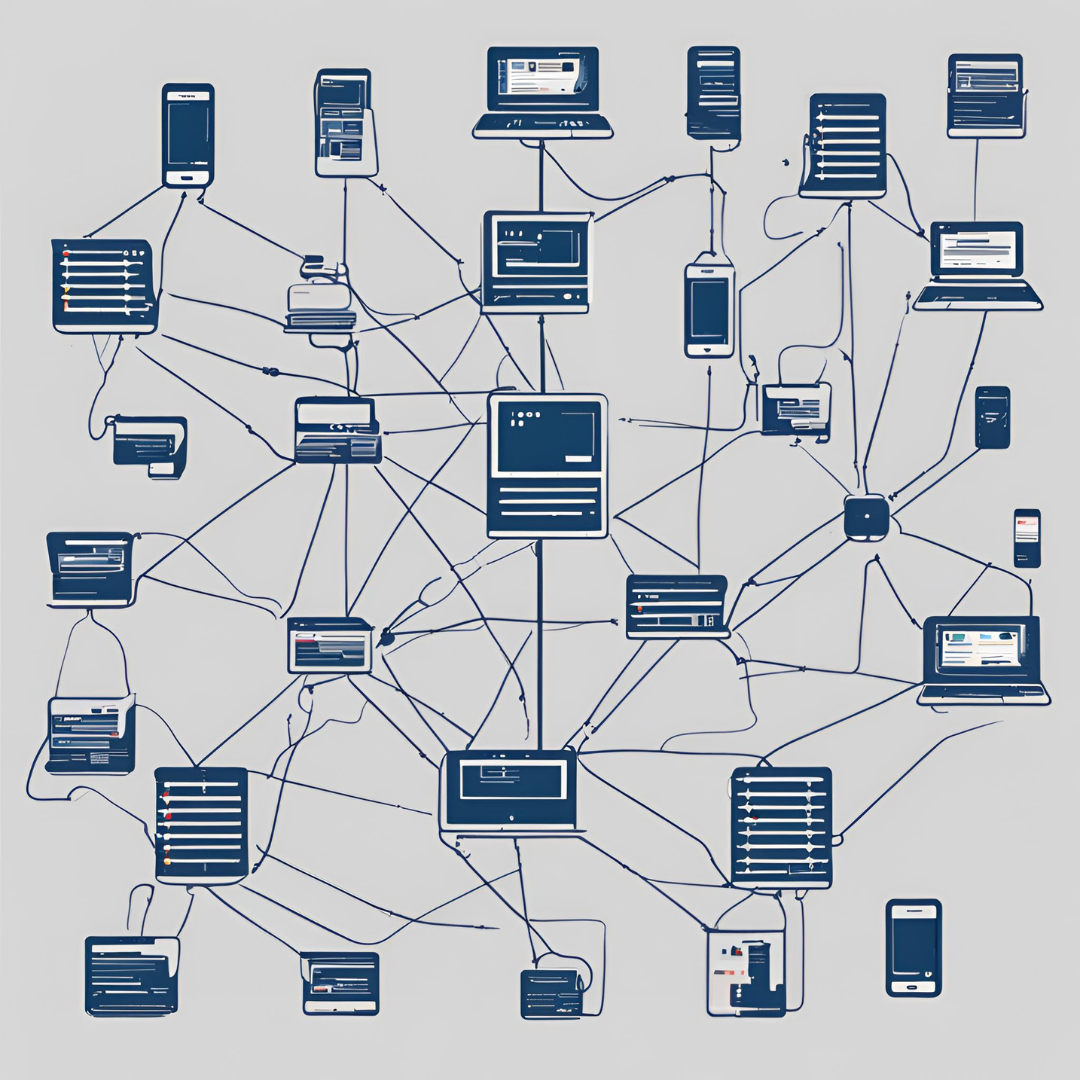The financial world has been transformed by cryptocurrency and blockchain technology, providing innovative methods for transactions, value storage, and decentralized system creation. An all-encompassing manual, this guide delves into the basics of cryptocurrency, the foundation of blockchain technology, its functions, advantages, obstacles, and potential for the future.
What is Cryptocurrency?
Cryptocurrencies are a form of virtual or digital currency that employs cryptography to ensure security. They differ from fiat currencies that are issued by governments and instead rely on blockchain technology and decentralized networks. The most famous and original of these is Bitcoin, which emerged in 2009 under the identity of Satoshi Nakamoto, a mysterious individual or group.
Key Characteristics of Cryptocurrencies
-
Decentralization: Cryptocurrencies operate on decentralized networks, typically using blockchain technology. This eliminates the need for a central authority, such as a bank or government, to issue or regulate the currency.
-
Cryptography: Cryptocurrencies use cryptographic techniques to secure transactions and control the creation of new units. This ensures the integrity and security of the currency.
-
Transparency: Transactions made with cryptocurrencies are recorded on a public ledger called the blockchain, which anyone can view. This transparency helps prevent fraud and double-spending.
-
Immutability: Once a transaction is recorded on the blockchain, it cannot be altered or deleted. This immutability ensures the reliability and permanence of transaction records.
-
Anonymity: While cryptocurrency transactions are transparent, they offer a degree of anonymity. Users are identified by their public keys (cryptographic addresses) rather than personal information.
Blockchain Technology Explained
Cryptocurrencies are powered by blockchain technology, a digital ledger that is both decentralized and distributed across multiple computers. This innovative solution ensures the security and authenticity of data by making it almost impossible to tamper with without agreement from the network.
How Blockchain Works
-
Blocks: Transactions are grouped into blocks, which are added to the blockchain in a linear, chronological order.
-
Nodes: A blockchain network consists of nodes (computers) that validate and relay transactions. Each node maintains a copy of the blockchain.
-
Consensus Mechanisms: Blockchain networks use consensus mechanisms to agree on the validity of transactions. The most common mechanisms are Proof of Work (PoW) and Proof of Stake (PoS).
-
Mining: In PoW systems like Bitcoin, mining is the process of solving complex mathematical problems to validate transactions and add new blocks to the blockchain. Miners are rewarded with cryptocurrency for their efforts.
-
Smart Contracts: Blockchain can also support smart contracts, which are self-executing contracts with the terms directly written into code. These contracts automatically execute and enforce agreements without intermediaries.
Popular Cryptocurrencies
-
Bitcoin (BTC): The first and most widely recognized cryptocurrency. It is often referred to as digital gold due to its limited supply and store of value properties.
-
Ethereum (ETH): Known for its smart contract functionality, Ethereum enables developers to build decentralized applications (dApps) on its blockchain.
-
Ripple (XRP): Focused on facilitating cross-border payments and remittances, Ripple aims to provide faster and cheaper transactions than traditional banking systems.
-
Litecoin (LTC): Created as a "lighter" version of Bitcoin, Litecoin offers faster transaction times and a different hashing algorithm.
-
Cardano (ADA): A blockchain platform focused on sustainability, scalability, and interoperability. Cardano uses a PoS consensus mechanism called Ouroboros.
Applications of Blockchain Technology
-
Finance: The implementation of blockchain technology facilitates safe and open financial dealings, decreasing the necessity for middlemen and decreasing expenses. It can simplify operations like money transfers across borders, sending money back home, and converting assets into tokens.
-
Supply Chain Management: The use of blockchain technology in supply chains increases visibility and accountability, which aids in the prevention of deception, guarantees the genuineness of goods, and enhances effectiveness.
-
Healthcare: Medical data can be kept safe and private while being shared among healthcare providers by using blockchain technology. This enables seamless sharing of patient records and medical information.
-
Voting Systems: The implementation of blockchain technology in voting systems has the potential to bolster election security and integrity, as it poses a significant challenge to any attempt at tampering with results and guarantees transparency.
-
Real Estate: The implementation of blockchain technology can streamline real estate deals, minimize deceitful activities, and establish a clear and unalterable proof of possession.
Benefits of Cryptocurrencies and Blockchain
-
Security: The application of cryptographic methods and decentralized networks heightens the protection of transactions and information.
-
Transparency: The use of blockchain technology guarantees that transactions are both transparent and accountable through its public ledger.
-
Lower Costs: The implementation of blockchain technology can lead to a decrease in transaction fees and operational expenses by cutting out intermediaries.
-
Accessibility: The use of cryptocurrencies can broaden financial services and support those who lack access to banking systems, promoting financial inclusivity.
-
Innovation: The advancement of blockchain technology has paved the way for novel business models and applications, stimulating creativity and progress in a wide range of sectors.
Challenges and Risks
-
Regulatory Uncertainty: The world of cryptocurrencies and blockchain technology is facing an ever-changing regulatory environment. Without well-defined regulations, confusion and doubt can impede acceptance.
-
Scalability: Many blockchain networks face scalability issues, limiting the number of transactions they can process per second. This can lead to slower transaction times and higher fees during peak usage.
-
Security Concerns: Although blockchain technology is known for its security, it is still vulnerable to cyber attacks. Smart contracts, scams and other types of vulnerabilities can put users at risk.
-
Environmental Impact: The environmental impact of PoW-based cryptocurrencies, such as Bitcoin, is a growing concern due to the significant amount of energy they consume.
-
Market Volatility: The value of cryptocurrencies tends to fluctuate frequently, which can be a concern for investors and hinder their function as dependable forms of payment.
Conclusion
Cryptocurrency and blockchain technology are transforming the way we think about money, transactions, and decentralized systems. While there are challenges to overcome, the potential benefits of increased security, transparency, and efficiency make them powerful tools for the future. By staying informed and understanding the fundamentals, individuals and businesses can harness the opportunities presented by this revolutionary technology and participate in the ongoing evolution of the digital economy.





Leave a Reply